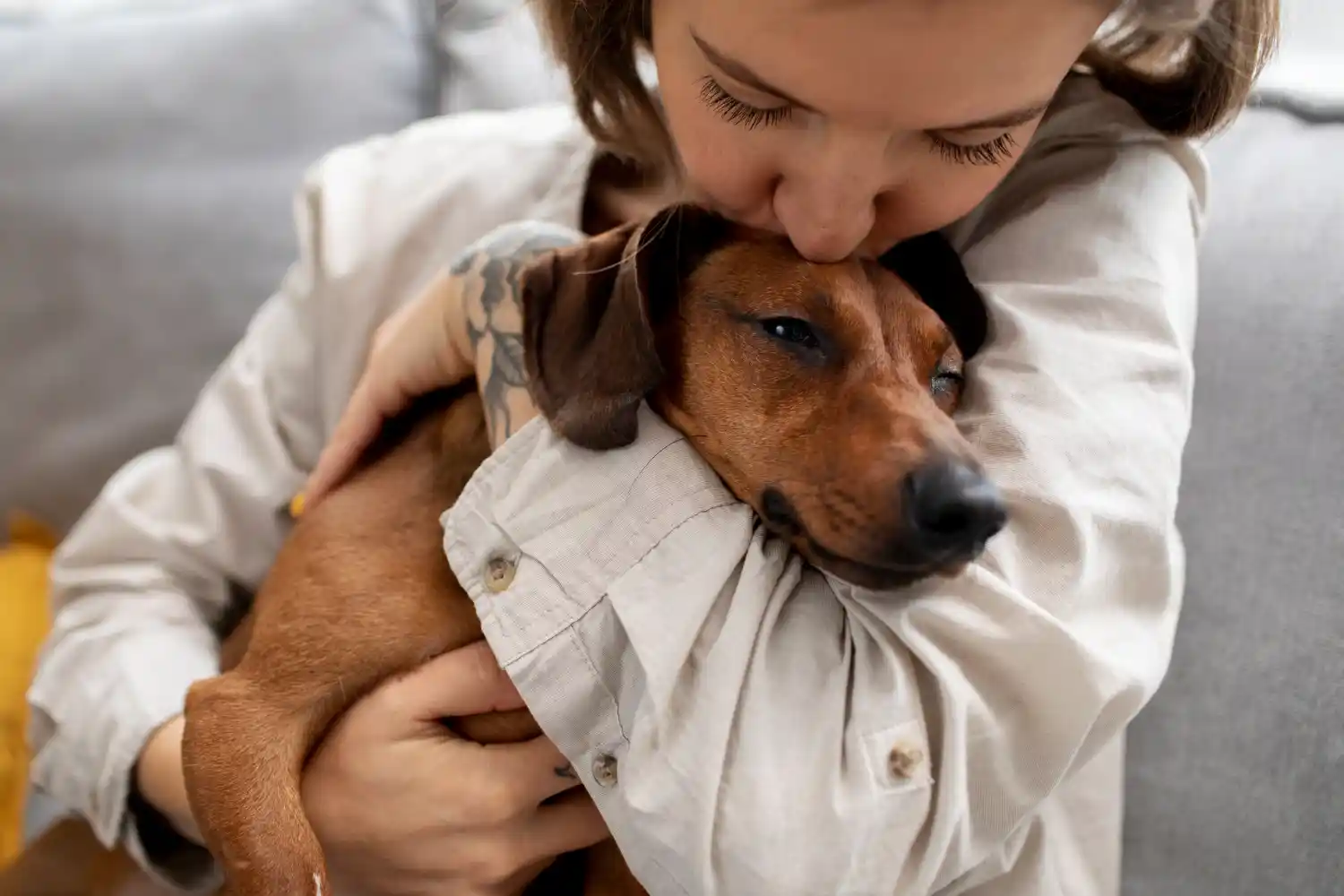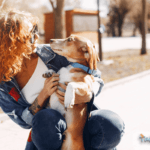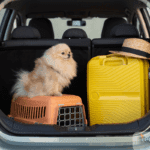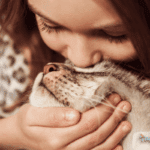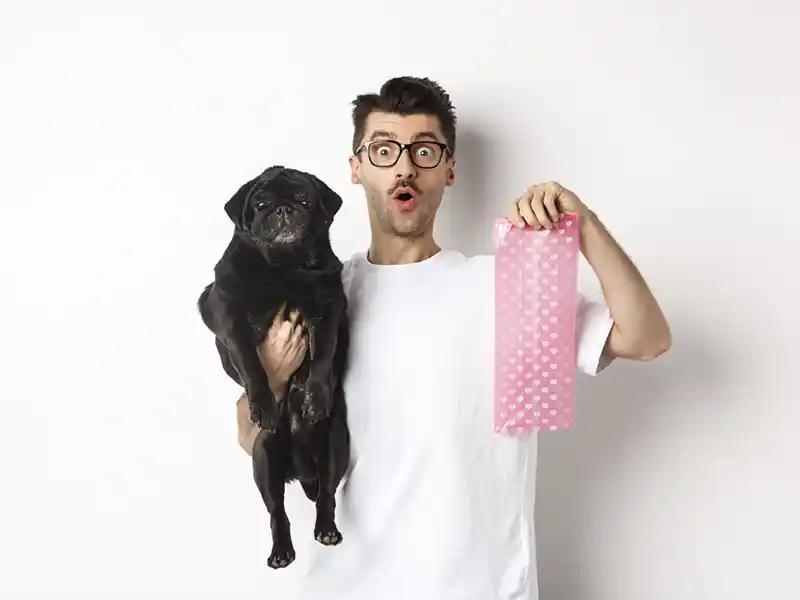Hey there, dog lovers! If you’re on the hunt for a furry companion who thrives on snuggles, you’ve come to the right place. Dogs have a unique way of bringing comfort and joy into our lives, but some breeds take affection to a whole new level. Whether you’re cuddled up on the couch or lounging outdoors, these canine cuddle bugs will warm your heart and your lap. Let’s explore the top cuddle champions in the dog world!
Why Do Dogs Love to Cuddle?
Before we dive into the cuddle champions, let’s take a moment to understand why dogs love to snuggle. Cuddling isn’t just adorable—it’s deeply rooted in canine behavior and biology.
For dogs, cuddling is a form of bonding. In the wild, pack animals huddle together to stay warm, build trust, and strengthen their social connections. When your dog curls up next to you, it’s their way of saying, “You’re part of my pack.”
But there’s more. Cuddling with your pup releases oxytocin, often called the “love hormone.” This feel-good chemical promotes trust and reduces stress—for both you and your furry friend. So, when your dog leans in for some snuggle time, it’s not just about warmth; it’s about building an emotional connection.
“For a deeper understanding of canine behavior, explore our guide on fostering positive dog behavior.“
The Top 12 Affectionate Dog Breeds
Let’s meet the cuddle champions! Each breed on this list is celebrated for its loving nature and ability to form deep bonds with their humans. From big, fluffy giants to petite lapdogs, there’s a cuddly companion for everyone.
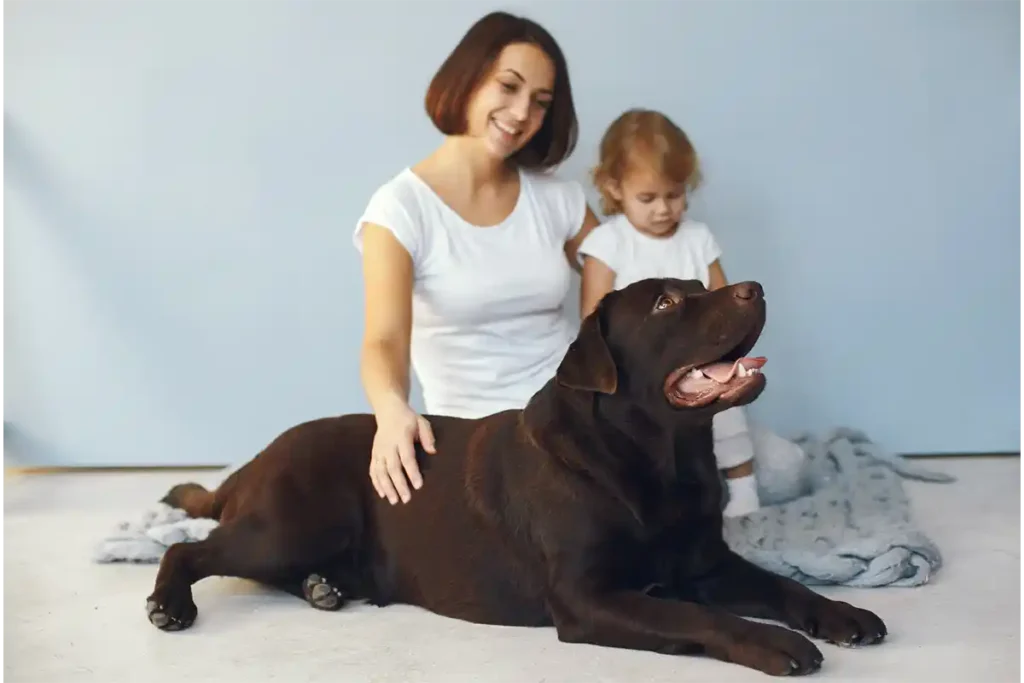
1. Labrador Retriever
Why They’re Cuddly: Labrador Retrievers are affectionately known as “people pleasers.” These loyal dogs thrive on human connection and are happiest when they’re close to their family. Many pet parents find their unwavering affection comforting and grounding.
Care Tip: Labs are prone to obesity, so maintaining a balance between snuggling and active play is essential. Dr. Esther Knoetze, BSc, BVSc, recommends 60 minutes of daily exercise, including activities like swimming or hiking, to support their physical health and prevent boredom.
Fun Fact: Labrador Retrievers are among the most popular therapy dog breeds worldwide due to their calming presence and friendly demeanor, often assisting in hospitals and schools.
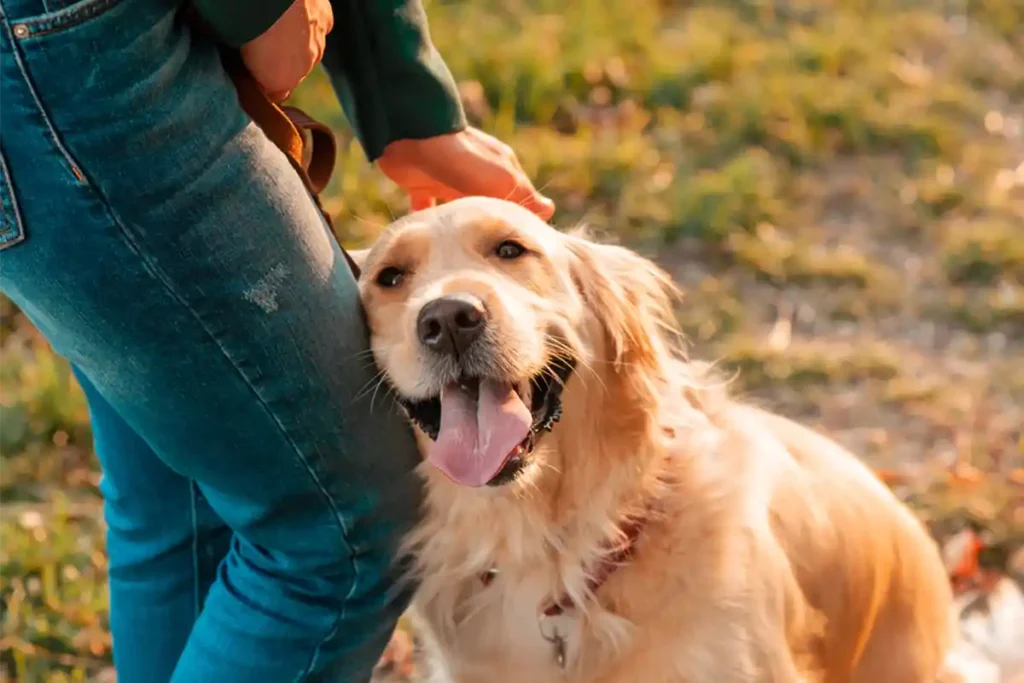
2. Golden Retriever
Why They’re Cuddly: Golden Retrievers are adored for their sweet, patient demeanor. They form deep bonds with their families and often seek out physical closeness as a way to show their affection. Their love for cuddling is unmatched, making them a go-to breed for families and individuals alike.
Care Tip: Their lush golden coats require regular brushing to reduce shedding and prevent matting. Dr. Esther Knoetze, BSc, BVSc, highlights the importance of monitoring their joints as they age, as Golden Retrievers are prone to hip dysplasia. Providing joint supplements early can promote long-term health.
Fun Fact: Did you know that Golden Retrievers have a natural affinity for water? Originally bred as hunting companions, their webbed feet make them excellent swimmers.
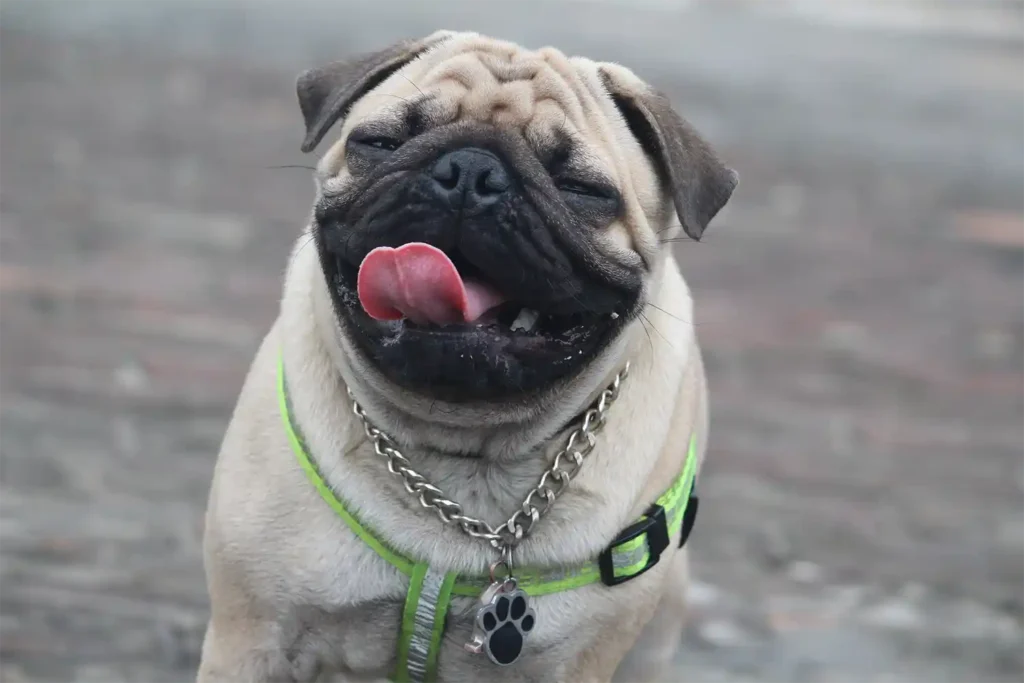
3. Pug
Why They’re Cuddly: With their adorable wrinkled faces and playful nature, Pugs are quintessential lapdogs. They crave attention and will happily snuggle up to their humans at every opportunity.
Care Tip: Pugs are prone to brachycephalic syndrome due to their flat faces, which can cause breathing difficulties. Dr. Knoetze advises keeping them cool in hot weather and using a harness instead of a collar to reduce airway strain.
Fun Fact: Pugs were once the companions of Chinese emperors and often lived in lavish surroundings befitting their royal status.
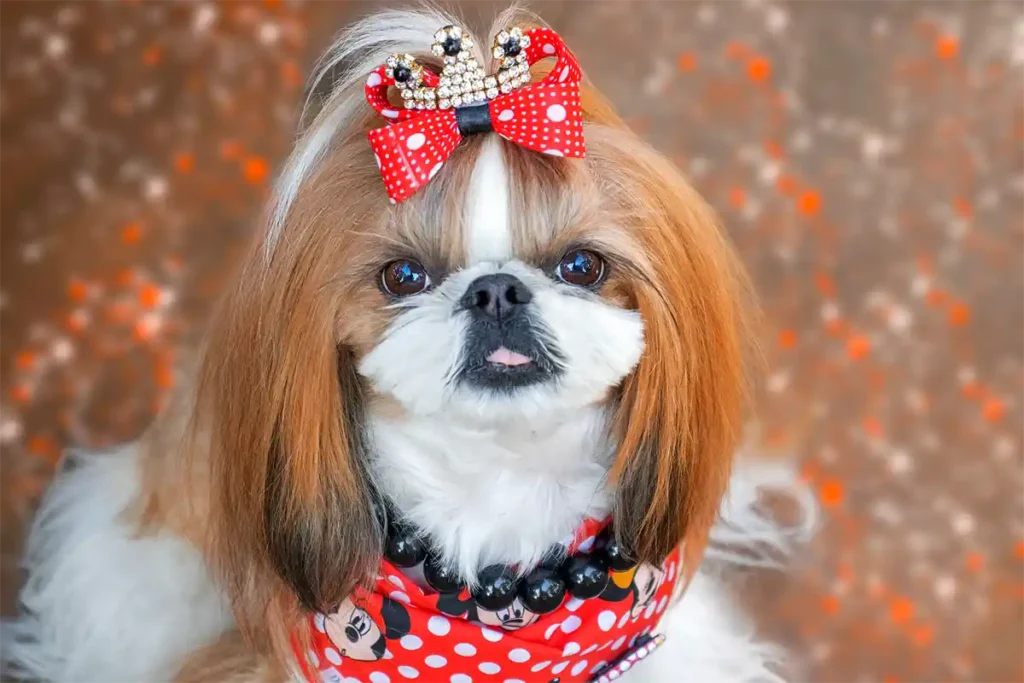
4. Shih Tzu
Why They’re Cuddly: Shih Tzus were bred as lap companions for Chinese royalty, and their affectionate nature reflects this regal history. They thrive on attention and love nothing more than being the center of their family’s world. Their small size makes them perfect for curling up in your lap.
Care Tip: Regular grooming is a must to maintain their signature silky coat. Dr. Esther Knoetze recommends scheduling professional grooming every 4-6 weeks, along with daily brushing at home to prevent tangles. Keep an eye on their teeth, as smaller breeds are prone to dental issues.
Fun Fact: Despite their small stature, Shih Tzus are known for their confident and spirited personalities, often acting as though they rule the house!
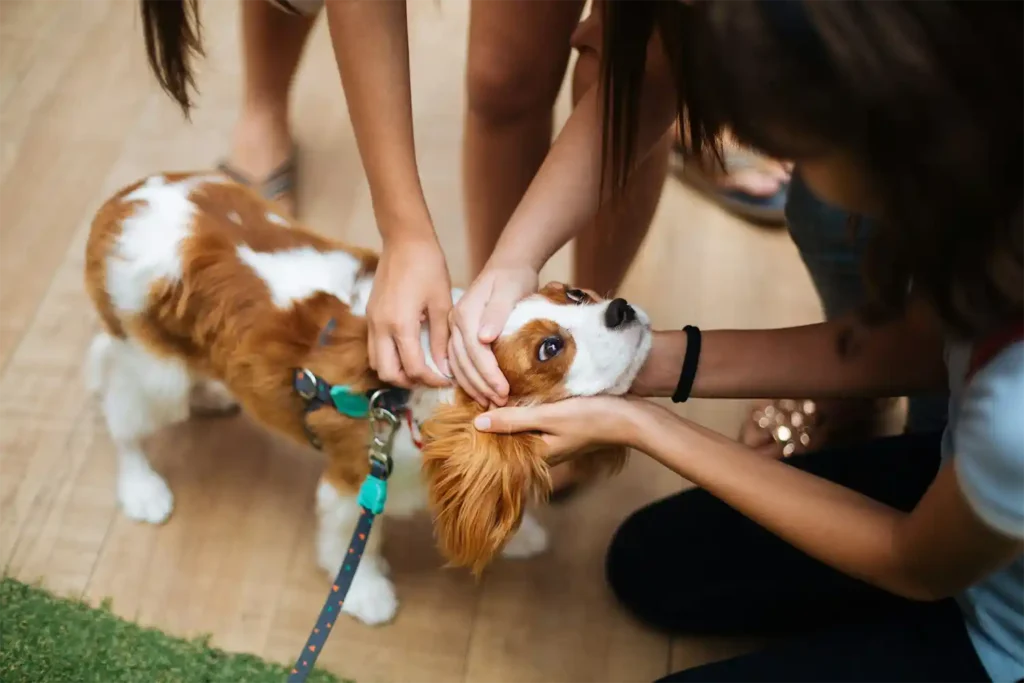
5. Cavalier King Charles Spaniel
Why They’re Cuddly: Known as “love sponges,” Cavalier King Charles Spaniels are affectionate and gentle lapdogs that thrive on human companionship. They’ll follow you around the house and settle into your lap whenever possible.
Care Tip: Regular vet check-ups are essential, as this breed is prone to heart conditions like mitral valve disease. Dr. Esther Knoetze, BSc, BVSc, suggests keeping an active routine with light exercises such as walks to support their overall cardiovascular health.
Fun Fact: These dogs were once favored by European royalty and often appear in portraits beside kings and queens!
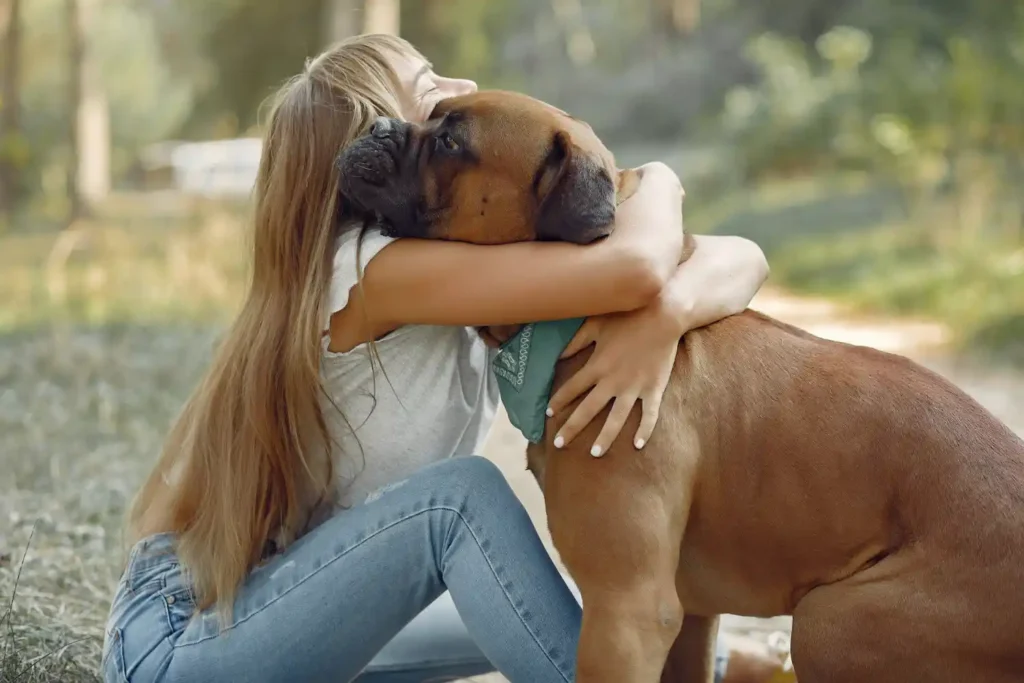
6. Boxer
Why They’re Cuddly: Behind their athletic build and energetic demeanor lies a big-hearted softie. Boxers love to snuggle after a day of playing, and their loyalty makes them incredibly affectionate companions for families.
Care Tip: Early training is crucial for Boxers to channel their energy positively. Dr. Knoetze advises incorporating interactive toys and structured playtime to keep them mentally and physically engaged.
Fun Fact: Boxers earned their name from their tendency to “box” with their front paws during play—a quirky and endearing behavior.
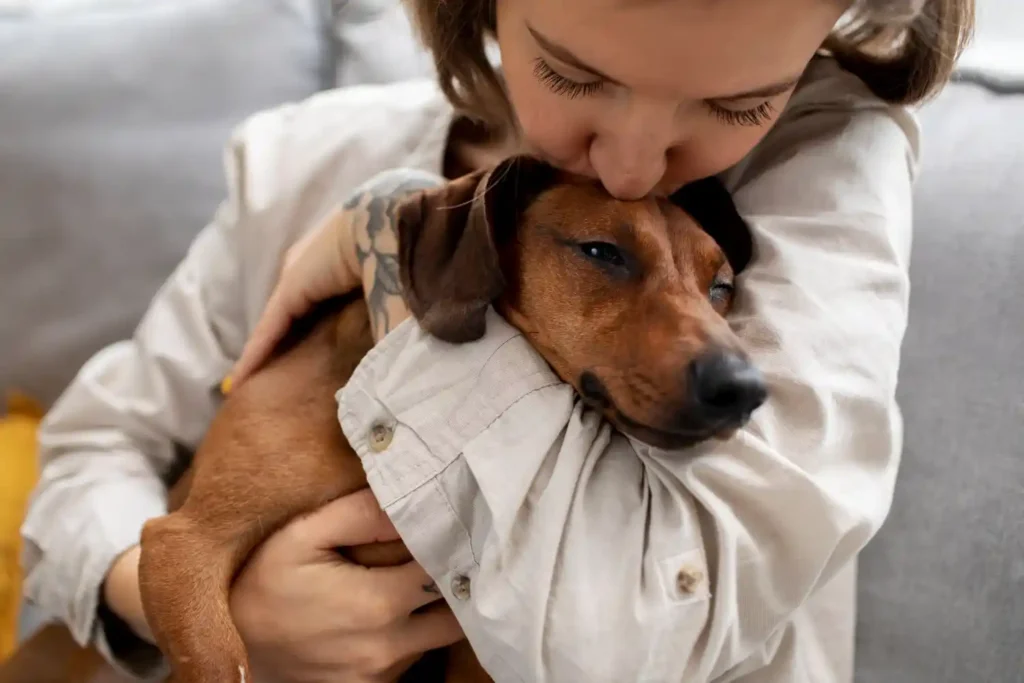
7. Dachshund
Why They’re Cuddly: Despite their independent streak, Dachshunds form strong bonds with their families and enjoy curling up under blankets for a cozy nap. Their playful and charming personalities add to their irresistible appeal.
Care Tip: Due to their long backs, Dachshunds are at risk of intervertebral disc disease (IVDD). Dr. Knoetze emphasizes the importance of preventing them from jumping off furniture and maintaining a healthy weight to minimize strain on their spine.
Fun Fact: Dachshunds were originally bred in Germany to hunt badgers, and their name translates to “badger dog.”
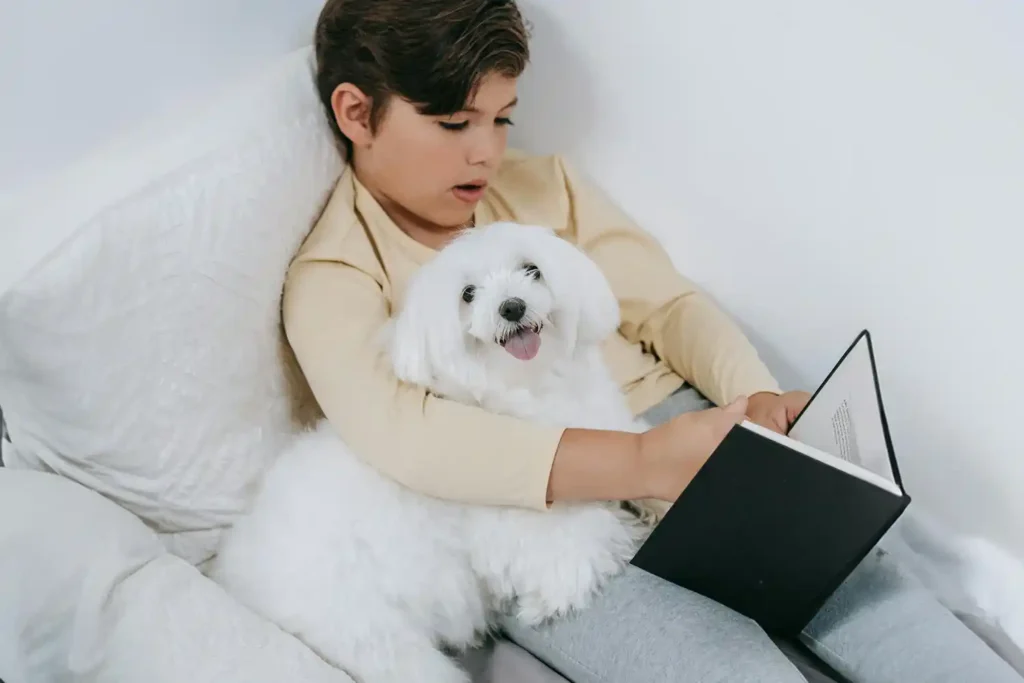
8. Bichon Frise
Why They’re Cuddly: The Bichon Frise is known for its cheerful disposition and love of cuddling. These small, fluffy companions are happiest when spending quality time with their families, often seeking out affection through play and snuggles.
Care Tip: Their soft, hypoallergenic coats require frequent grooming to prevent matting and maintain their signature fluffy appearance. Dr. Esther Knoetze, BSc, BVSc, also recommends regular dental care, as small breeds are prone to periodontal disease.
Fun Fact: The Bichon Frise was a favorite of French royalty and often depicted in 18th-century artwork as a lapdog of nobility.
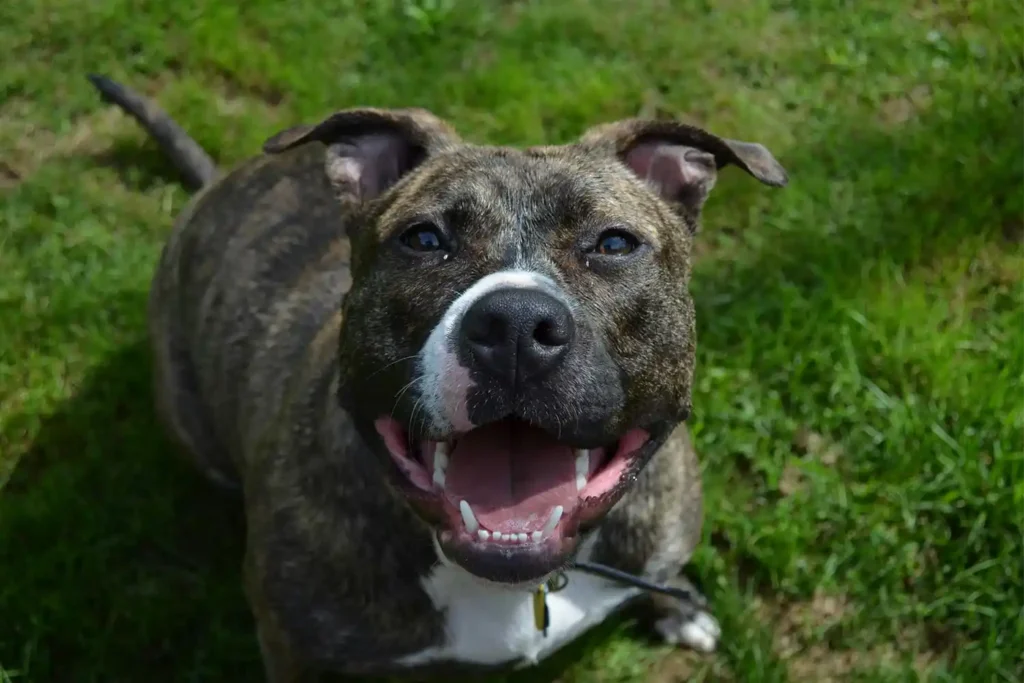
9. American Staffordshire Terrier
Why They’re Cuddly: Often misunderstood, American Staffordshire Terriers are incredibly loyal and affectionate with their families. They thrive on close contact and will often lean on their humans for comfort and security.
Care Tip: Socialization from a young age is key to fostering their gentle nature. Dr. Knoetze advises regular interaction with other dogs and people to ensure they grow into well-rounded companions.
Fun Fact: This breed’s nickname, “AmStaff,” reflects its versatility as both a loving family pet and a working dog.
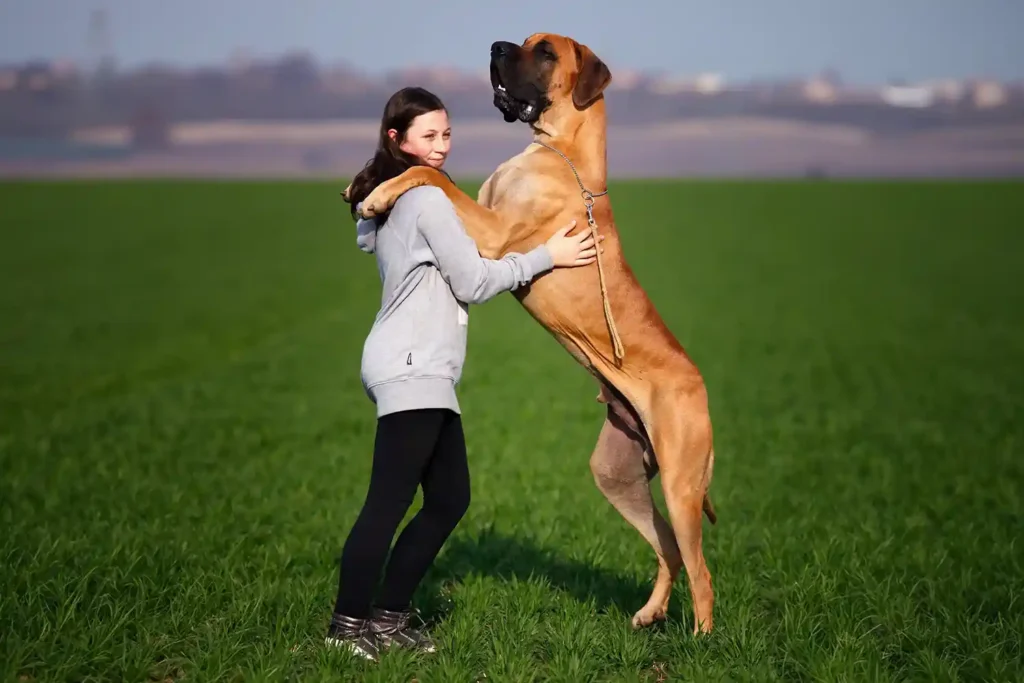
10. Great Dane
Why They’re Cuddly: Known as “gentle giants,” Great Danes may tower over most breeds, but they have hearts just as big as their size. They’re often found leaning against their owners or attempting to sit in their laps despite their large stature!
Care Tip: Great Danes are prone to bloat, a life-threatening condition. Dr. Knoetze recommends feeding them smaller meals throughout the day and avoiding vigorous activity immediately after eating.
Fun Fact: Scooby-Doo, the beloved cartoon dog, is famously based on the Great Dane breed.
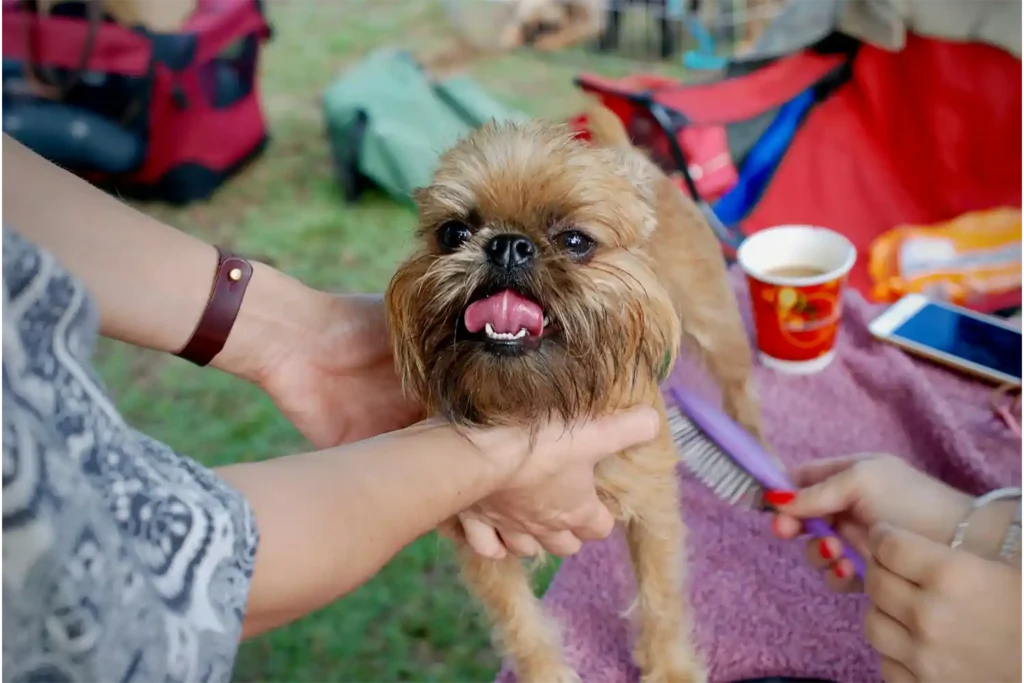
11. Brussels Griffon
Why They’re Cuddly: Small but mighty, the Brussels Griffon thrives on human interaction. These charming and quirky lapdogs love nothing more than curling up with their favorite person for hours of affection and companionship.
Care Tip: Socialization is vital to prevent timidity in this sensitive breed. Dr. Esther Knoetze, BSc, BVSc, suggests exposing them to different environments and experiences early to help build their confidence.
Fun Fact: Brussels Griffons gained fame after appearing in the movie As Good As It Gets, where their loving and spirited personality stole the show.
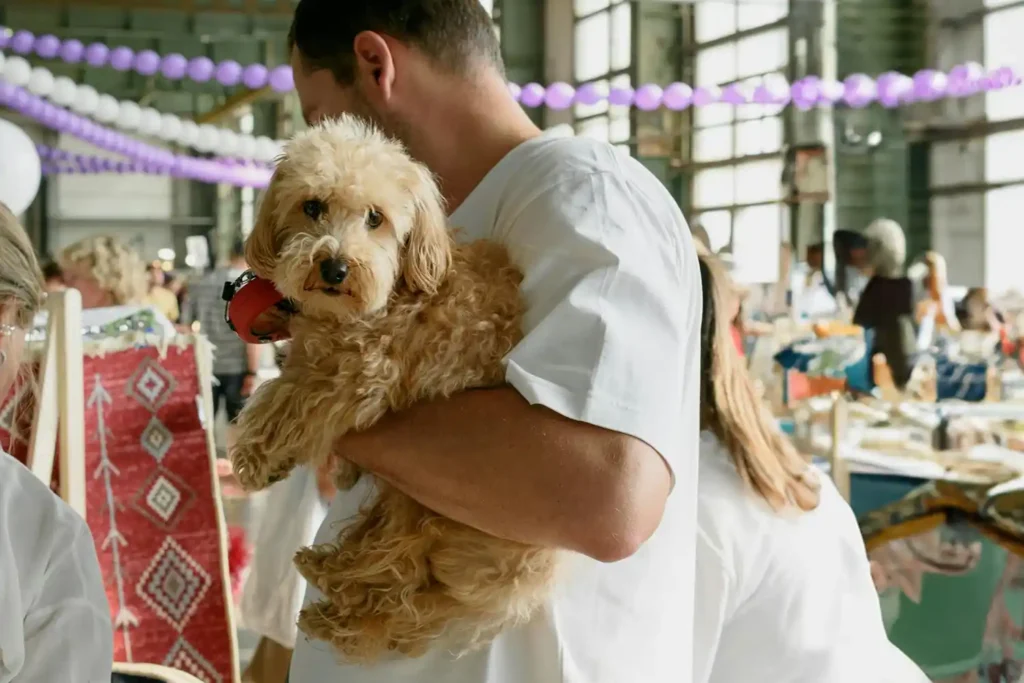
12. Labradoodle
Why They’re Cuddly: A delightful mix of Labrador Retriever and Poodle, Labradoodles combine intelligence, friendliness, and a love for cuddles. Their hypoallergenic coats and warm personalities make them a popular choice for families.
Care Tip: Labradoodles are highly energetic and require mental stimulation. Dr. Knoetze recommends activities like puzzle feeders and agility training to keep them engaged.
Fun Fact: Labradoodles were first bred as hypoallergenic guide dogs in the 1980s and have since become one of the most sought-after designer breeds.
Comparison of Breeds by Key Traits
Find your perfect cuddly companion by comparing affection levels, size, energy needs, grooming requirements, and family compatibility.
| Breed | Size | Energy Level | Grooming Needs | Family Compatibility |
|---|---|---|---|---|
| Labrador Retriever | Large (55–80 lbs / 25–36 kg) | High (60+ min/day) | Moderate (weekly brushing) | Excellent for active families |
| Golden Retriever | Large (55–75 lbs / 25–34 kg) | High (daily outdoor time) | High (frequent brushing) | Perfect for families with children |
| Shih Tzu | Small (9–16 lbs / 4–7 kg) | Low (short walks/play) | High (daily grooming) | Great for apartments or small homes |
| Great Dane | Giant (100–200 lbs / 45–91 kg) | Moderate (short walks) | Low (easy coat maintenance) | Gentle giant, good with children |
| Pug | Small (14–18 lbs / 6–8 kg) | Low (indoor play) | Low (clean wrinkles weekly) | Ideal for apartment dwellers |
| Cavalier King Charles | Small (13–18 lbs / 6–8 kg) | Moderate (daily short walks) | Moderate (regular brushing) | Excellent for families and seniors |
| Boxer | Large (50–70 lbs / 22–32 kg) | High (daily vigorous play) | Low (minimal brushing) | Best for active families |
| Dachshund | Small (16–32 lbs / 7–15 kg) | Moderate (indoor/outdoor) | Low (minimal brushing) | Ideal for small households |
| Bichon Frise | Small (12–18 lbs / 5–8 kg) | Low (indoor play/walks) | High (professional grooming) | Perfect for allergy-sensitive homes |
| American Staffordshire | Medium (40–70 lbs / 18–32 kg) | High (daily active play) | Low (occasional brushing) | Great for experienced pet owners |
| Brussels Griffon | Small (8–12 lbs / 4–5.5 kg) | Low (indoor play) | Moderate (weekly brushing) | Best for calm, loving households |
| Labradoodle | Medium-Large (50–75 lbs / 22–34 kg) | High (mental stimulation) | Moderate (low shedding) | Great for active allergy-prone owners |
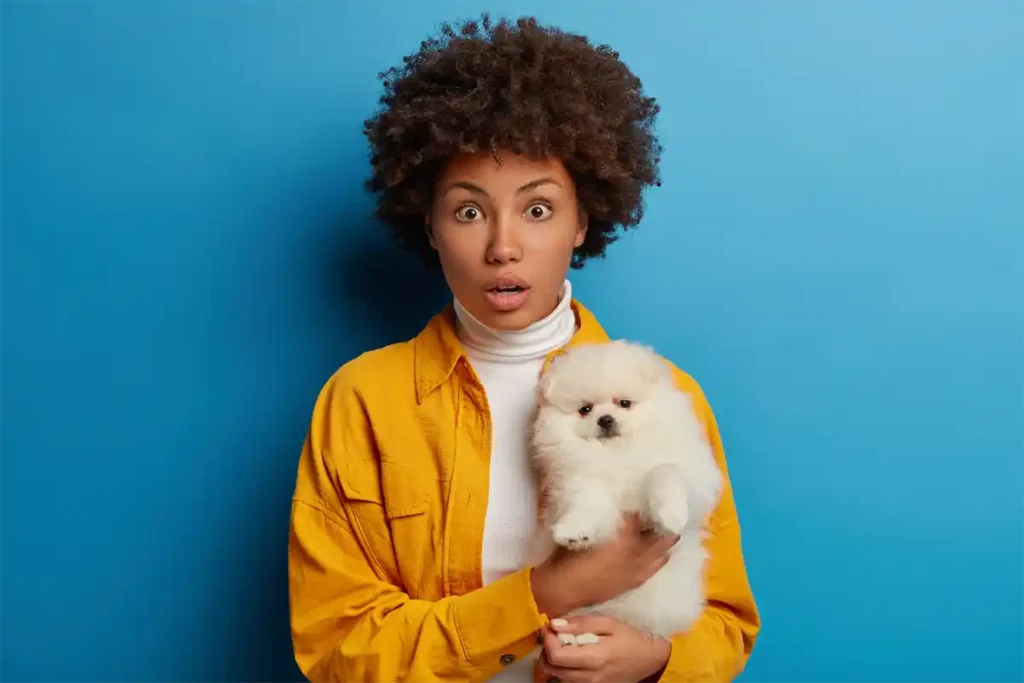
Frequently Asked Questions
Q1: Why do some dog breeds love to cuddle more than others?
A: Dogs’ affection levels can be influenced by their genetics, purpose of breeding, and socialization. Breeds developed for companionship, like Golden Retrievers and Shih Tzus, naturally seek close contact with humans. Cuddling helps dogs feel secure and strengthens their bond with you.
Veterinary Insight: Dr. Esther Knoetze, BSc, BVSc, explains, “Cuddling isn’t just about comfort—it’s a biological behavior rooted in pack dynamics. Dogs bond with their ‘pack,’ which includes you, through close physical contact.” Here are 7 proven strategies to deepen your bond with your pet.
Q2: Are larger dogs less likely to cuddle compared to smaller breeds?
A: Not at all! While smaller breeds like Pugs and Cavalier King Charles Spaniels are classic lapdogs, larger breeds such as Labradors, Golden Retrievers, and Great Danes are equally affectionate. They might not fit in your lap but often express their love by leaning against you or resting their head on you.
Veterinary Tip: “Large breeds are highly social but may also require consistent training to manage their size during affectionate moments,” notes Dr. Knoetze.
Q3: Which dog breeds are best for families with young children?
A: Breeds like Labrador Retrievers, Golden Retrievers, and Cavalier King Charles Spaniels are wonderful with children. They’re gentle, patient, and have a natural ability to bond with young family members. Always supervise interactions between children and dogs to ensure safety for both.
Veterinary Advice: “Early socialization and consistent boundaries help any breed adapt well to life with children,” says Dr. Knoetze.
Q4: What should I consider before adopting an affectionate dog breed?
A: Evaluate your lifestyle, time commitment, and the specific needs of the breed. For example:
- Active families may prefer energetic breeds like Labradors or Boxers.
- Apartment dwellers might find a Shih Tzu or Pug more manageable.
- Consider grooming needs—long-haired breeds like Shih Tzus and Bichon Frises require regular care.
Veterinary Advice: Dr. Knoetze recommends considering health predispositions. “For instance, breeds like Golden Retrievers may be prone to hip dysplasia, so preparing for preventive care is essential.”
Q5: How can I make my dog more affectionate?
A: Building trust is key. Spend quality time with your dog through play, walks, and training sessions. Use positive reinforcement to reward affectionate behaviors. Avoid forcing physical contact, as some dogs need time to warm up to cuddling.
Veterinary Insight: “Every dog has a unique personality. Consistent routines, a calm environment, and plenty of love will help even the most reserved dog become more affectionate,” advises Dr. Knoetze.
Q6: Are any of these breeds hypoallergenic?
A: Yes, breeds like Labradoodles and Bichon Frises are often considered hypoallergenic. While no dog is entirely allergen-free, these breeds produce less dander, making them a better choice for allergy sufferers. Regular grooming is still necessary to reduce allergens.
Veterinary Note: “Hypoallergenic breeds are ideal for allergy-prone families, but it’s important to spend time around the breed before adoption to ensure compatibility,” suggests Dr. Knoetze.
Q7: Can affectionate dogs handle being left alone for long periods?
A: Most affectionate breeds thrive on companionship and may struggle with being left alone for extended periods. Breeds like Pugs and Cavalier King Charles Spaniels are prone to separation anxiety. If you have a busy schedule, consider a dog sitter, daycare, or a breed known for independence.
Veterinary Tip: “Separation anxiety can manifest as destructive behavior or excessive barking. Interactive toys and crate training can help ease stress,” says Dr. Knoetze.
Q8: Do affectionate breeds need more exercise than other dogs?
A: Exercise needs vary by breed. For example:
- Active breeds like Labradors and Boxers need daily physical activity to stay healthy and balanced.
- More relaxed breeds, like Shih Tzus and Bichon Frises, require shorter walks and indoor playtime.
Veterinary Advice: “Regular exercise benefits both physical health and mental stimulation, which is crucial for preventing boredom-related behaviors,” explains Dr. Knoetze.
Read here about essential dog training commands and practical tips.
Q9: Are affectionate breeds suitable for first-time dog owners?
A: Absolutely! Breeds like Golden Retrievers, Labradors, and Cavalier King Charles Spaniels are easy to train and have gentle, adaptable personalities. They make excellent choices for novice owners willing to invest in proper care and training.
Veterinary Insight: “First-time owners should prioritize breeds known for their friendly and trainable nature, ensuring a smooth adjustment for both dog and owner,” advises Dr. Knoetze.
Read here about the 10 things to concider before bringing a new pet home.
Q10: How can I find a reputable breeder or shelter for these breeds?
A: Look for breeders registered with reputable organizations like the American Kennel Club (AKC). Alternatively, check breed-specific rescues or local shelters. A responsible breeder will prioritize health screenings and proper care for their dogs.
Veterinary Tip: “Ask breeders for health clearances on common breed conditions, such as hip dysplasia in larger dogs or heart issues in Cavaliers,” recommends Dr. Knoetze.
Final Thoughts
Cuddling with your dog is one of life’s simple pleasures, and these affectionate breeds ensure every day is filled with love and warmth. Whether you’re drawn to a regal Shih Tzu or a goofy Labrador Retriever, there’s a cuddly companion waiting to bring joy to your life.
Ready to find your perfect match? Explore these breeds, visit your local shelters, and don’t forget to share your snuggly adventures with us! Contact Tailwaggors
Meet 12 Affectionate Dog Breeds!
🐾✨ Discover their traits, care tips, fun facts, and why they’re the ultimate snuggle buddies.
Share with your fellow dog lovers and hear what they say 🐱❤️


